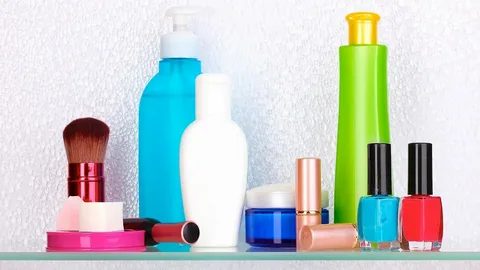Anti-Acne Cosmetics Market challenges faced by new entrants in competitive distribution channels worldwide

The Anti-Acne Cosmetics Market poses several challenges for new entrants, especially within globally competitive and increasingly fragmented distribution channels.
Rising Market Competition
The anti-acne cosmetics segment is saturated with both legacy brands and emerging players. Established names such as Neutrogena, Cetaphil, and La Roche-Posay dominate shelf space, online listings, and dermatological trust. This creates a significant barrier to entry for startups or lesser-known brands.
New entrants must compete not just on product effectiveness but also on brand credibility, pricing strategies, and marketing outreach. Without established reputations or large advertising budgets, penetrating a market with loyal consumers can be especially difficult.
Moreover, multinational companies have more resources to invest in R&D, celebrity endorsements, and expansive retail presence—raising the competitive threshold.
Distribution Complexity and Retail Dominance
Entering global markets means understanding the intricacies of regional distribution. Traditional retail networks, pharmacy chains, and beauty specialty stores still hold a strong influence in many countries. Securing shelf space in these environments requires negotiation, regulatory compliance, and brand visibility—all of which are costly and time-consuming for newer brands.
In addition, logistics partners, warehousing networks, and cross-border regulations vary by country. Adapting product packaging, ingredient labeling, and promotional content to local standards adds another layer of operational complexity.
Large brands usually have in-house or partnered logistics support, while new players often struggle with fragmented supply chains and inconsistent delivery experiences.
Online Market Saturation
Though e-commerce offers easier market access, it is no less competitive. Platforms such as Amazon, Nykaa, Shopee, and Sephora are flooded with similar-looking products, and gaining prominence without paid promotions is nearly impossible.
To appear in top searches or platform recommendations, brands must invest heavily in SEO, PPC advertising, influencer collaborations, and sponsored listings. This puts a financial strain on smaller companies just beginning their journey.
Additionally, user reviews play a powerful role in consumer decisions. New brands with few reviews may be overlooked in favor of well-established alternatives with proven testimonials and higher trust scores.
Regulatory and Compliance Barriers
Cosmetics are regulated differently across countries. New entrants must comply with varying safety standards, registration procedures, and banned ingredient lists. This includes:
-
FDA requirements in the U.S.
-
EU Cosmetics Regulation in Europe.
-
BIS standards and drug control guidelines in India.
-
CFDA regulations in China.
These processes often involve lengthy documentation, sample testing, and fees. Non-compliance can result in product bans, penalties, or recalls, making regulatory knowledge essential from day one.
Startups may lack the legal or scientific teams needed to navigate these complexities efficiently.
Branding and Consumer Trust
Skincare, especially anti-acne products, requires a high level of consumer trust. Users are cautious about trying unknown brands due to fear of side effects or ineffectiveness. Gaining credibility without clinical trials, dermatologist backing, or visible endorsements is a key hurdle.
Moreover, transparency is now a baseline expectation. Consumers want to know about ingredients, manufacturing processes, testing practices, and ethical sourcing. New entrants without clear communication or scientific validation are often passed over.
Building trust takes time, consistent communication, and a proven track record of safe, visible results—resources that newcomers may not immediately possess.
Cost Pressures and Margin Constraints
Competing with mass-market giants means pricing products affordably while still maintaining quality. However, smaller production volumes, third-party manufacturing, and limited access to raw materials drive up costs for new entrants.
Balancing these costs while maintaining profit margins is challenging. Discounts, free samples, and shipping incentives—common marketing tactics—can erode early-stage earnings. It often takes several product cycles before a brand achieves breakeven or profitability.
Without strong funding or sustained investment, these financial pressures may limit a brand’s ability to scale.
Need for Differentiation in a Crowded Space
Many new brands fail because they lack a clear unique selling proposition (USP). With hundreds of anti-acne products offering similar benefits, it’s crucial to stand out through:
-
Specialized ingredients (e.g., probiotics, adaptogens).
-
Unique formats (e.g., bars, patches, serums-in-stick).
-
Sustainable packaging and ethical practices.
-
Inclusive formulations for varied skin tones and types.
-
Personalization via quizzes or AI-based analysis.
Differentiation must be consistent across product design, messaging, and user experience to attract and retain attention in a cluttered digital environment.
Adapting to Fast-Changing Consumer Behavior
Young, digital-first consumers are trend-sensitive. Their preferences change based on influencers, social media trends, and cultural shifts. What’s popular today may fade tomorrow.
New entrants must be agile—able to spot trends, reformulate quickly, and launch new campaigns fast. However, without flexible manufacturing or responsive marketing teams, adapting at speed becomes difficult.
Furthermore, social proof is key. A viral post or negative review can make or break a brand overnight, leaving little room for error.
Conclusion
Entering the anti-acne cosmetics market is a high-stakes venture requiring strategic planning, regulatory knowledge, strong branding, and agile execution. New players must navigate global competition, complex distribution channels, and rapidly shifting consumer expectations. While challenges are significant, brands that bring innovation, transparency, and authenticity can still carve out space in this dynamic, demanding market.





